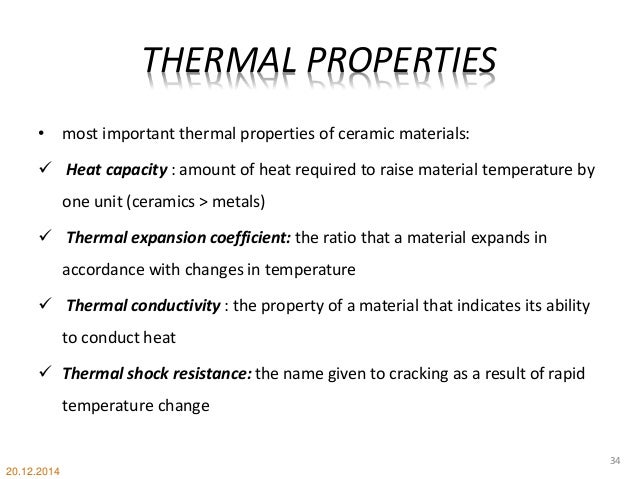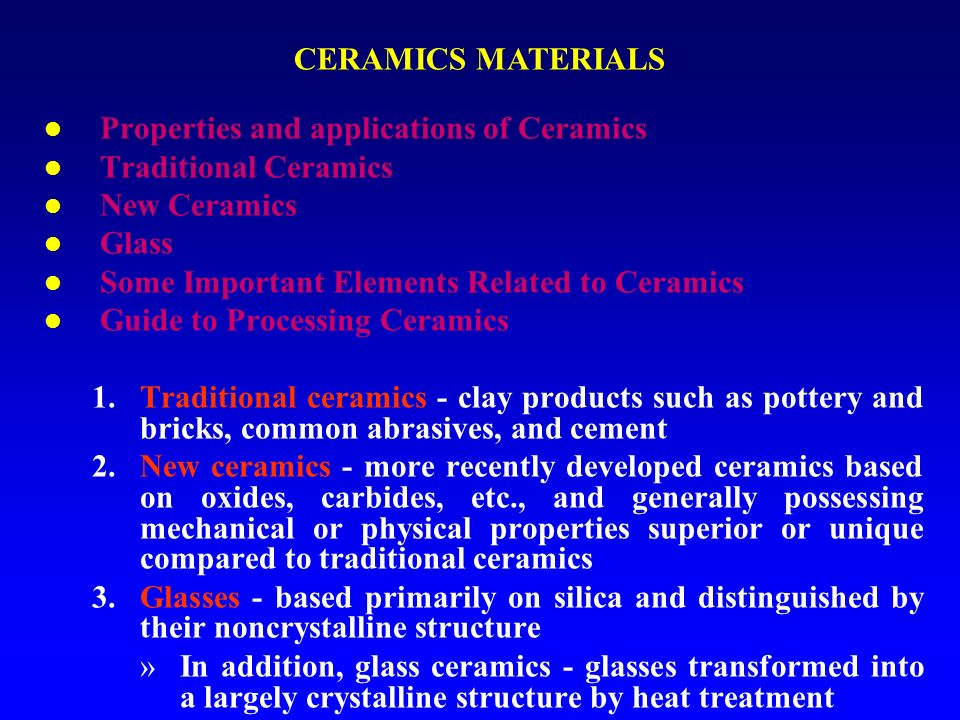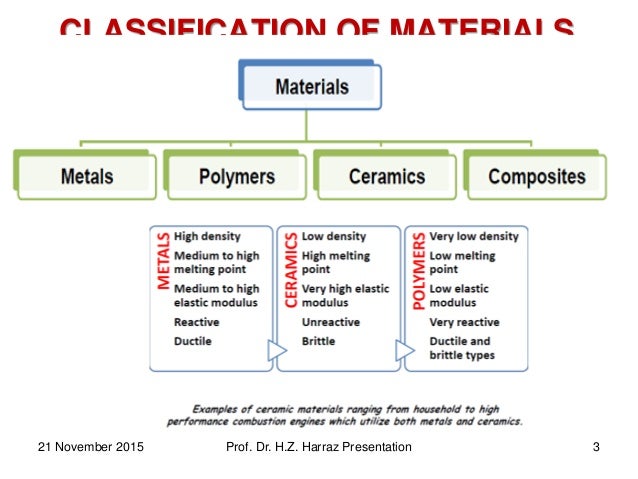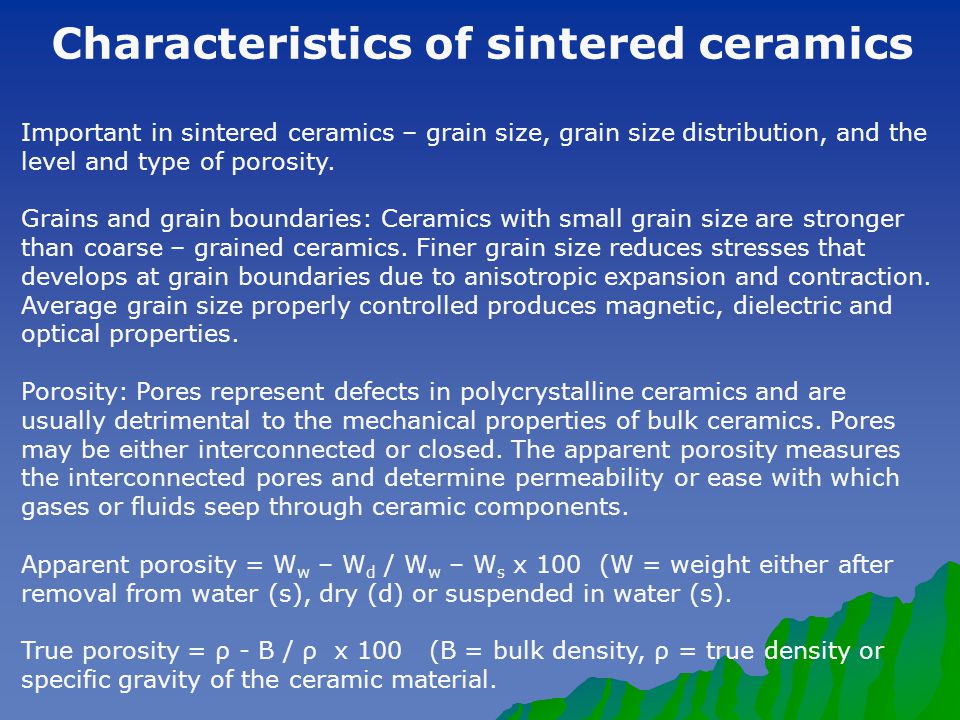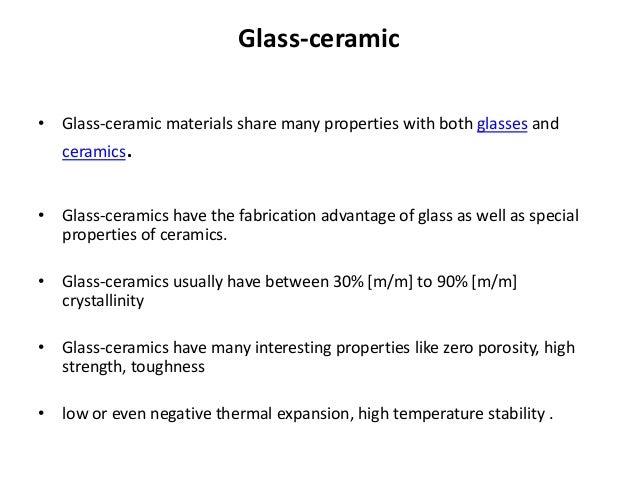People first started making ceramics thousands of years ago pottery glass and brick are among the oldest human invented materials and we re still designing brand new ceramic materials today things like catalytic converters for today s cars and high temperature superconductors for tomorrow s computers.
Important properties of ceramic materials.
Most ceramics are made up of two or more elements.
We determine the above all properties with the particle sizes of the material.
This is known as the atomic scale structure.
These material properties are utilized to produce number of commercial and domestic products such as pottery bricks advanced functional items etc.
They withstand chemical erosion that occurs in other materials subjected to acidic or caustic environments.
There s quite a big difference between age old general purpose.
A ceramic material is an inorganic non metallic often crystalline oxide nitride or carbide material.
The properties of ceramic materials like all materials are dictated by the types of atoms present the types of bonding between the atoms and the way the atoms are packed together.
Crystalline materials have high density than non crystalline materials.
Generally ceramic particles are fine and coarse.
Ceramic materials can be identified by their general properties like high hardness brittleness chemical stability and low thermal conductivity.
These highly desirable properties of ceramics have as yet been largely disregarded due to the perceived low toughness and brittle failure demonstrated by traditional ceramic strength however recent developments have led to a new breed of ceramic materials displaying mechanical properties that were previously considered.
Advanced ceramics and traditional ceramics are the main categories of ceramic materials.
These are very important parameters for the ceramic material.
Ceramic composition and properties atomic and molecular nature of ceramic materials and their resulting characteristics and performance in industrial applications.
Some elements such as carbon or silicon may be considered ceramics ceramic materials are brittle hard strong in compression and weak in shearing and tension.
What is a ceramic.
They have ionic atomic bonding they include insulating materials glass refractories abrasives enamels.
Industrial ceramics are commonly understood to be all industrially used materials that are inorganic nonmetallic solids.





